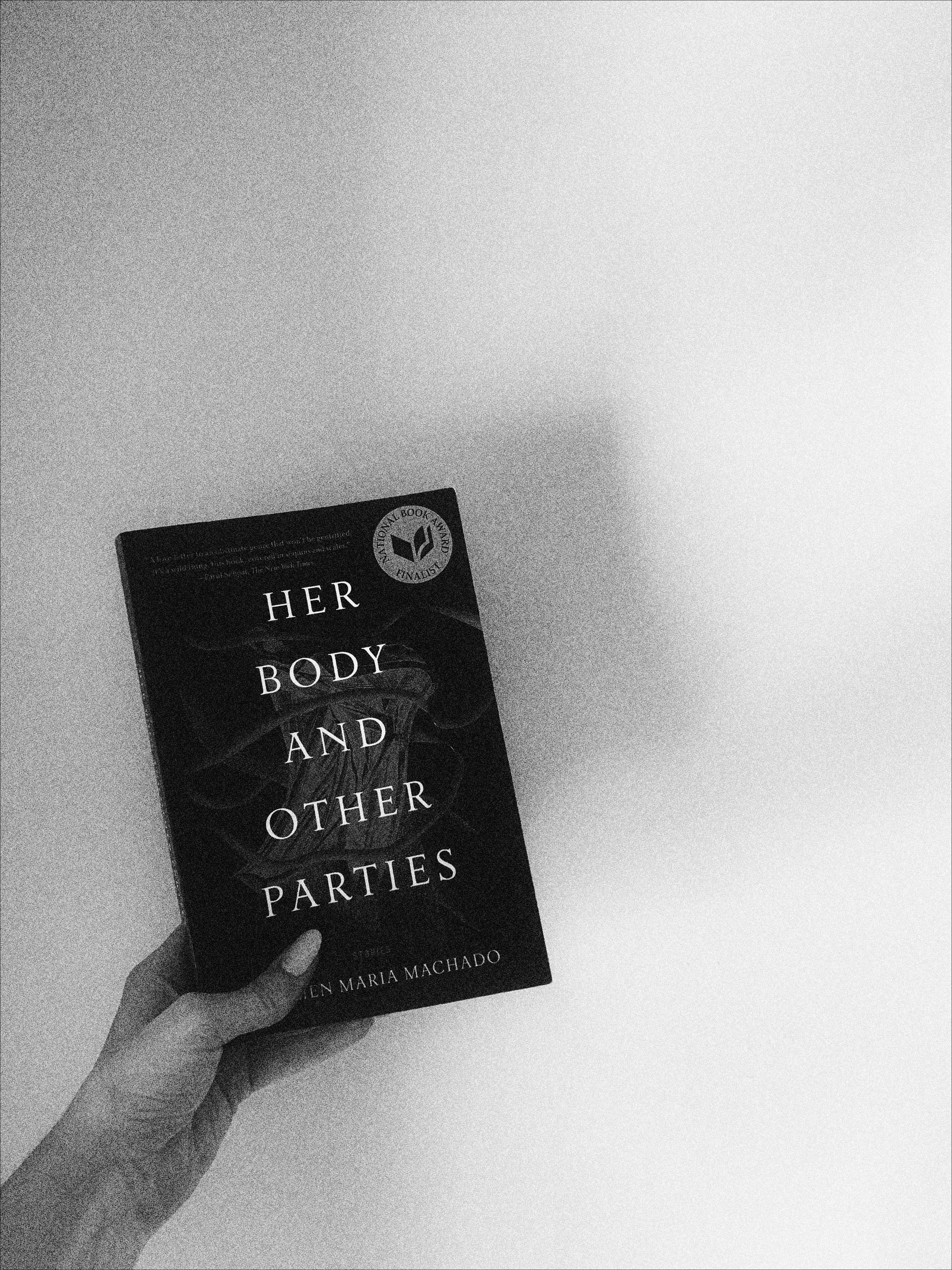I have a rule that I write my book reflections before reading any other reviews. I’m too impressionable to hear what other people think before forming my own opinion. Though that has not been the case with this one because I didn’t like it and, frankly, didn’t get it? I needed other people to help me make sense of it, so I took to the internet to uncover what made this book so special to be chosen as a finalist for the national book awards.
Her Body and Other Parties by Carmen Maria Machado is a collection of short stories. The common theme among all of them is female pain, both physical and psychological. At the risk of a repetitive comparison, I found it similar in style to Pure Colour by Sheila Heti and Gingerbread by Helen Oyeyemi – two books that warp the meaning of present thought.
In Ted Chiang style (who is ironically one of Machado’s favorite authors), the longest story in this book was my least favorite, naturally: an episode-by-episode rundown of every plot point in Law and Order SVU’s episode catalog. I had some hang ups with this. First of all, I don’t watch Law and Order because I have to be careful what I put into my brain. And so after reading this specific chapter, I’m like, did I just not know what Law and Order was about? Are these descriptions real? Is Olivia Benson actually hearing the voices of dead girls with bells for eyes in her head? Or does what I’m describing fall into the category of fan fiction? Also, in a book that’s already segmented into separate stories by nature of the structure, the last thing I want to read is a glorified list that forces my brain to constantly jump through the knowledge of a series I know nothing about.
This was my problem with this book: I didn’t know which aspects of it were supposed to be taken as hyperbolic and which ones weren’t. The lines blurred between satire and sobriety. Even if I was a Law and Order fan, this struggle was consistent across all chapters. And since I didn’t have the long arc of a novel to smooth things out for me, I barely had time to surface my questions before I was ushered into the next story. I think Machado had a level of assumption that her readers would enter into her universe with a similar collection of emotions as her. Emotions that come from living in a constant state of female surveillance, submission, and suppression. I will be the first to admit that I didn't*, but I felt the weight of that emotional expectation on me the entire time.
I do think the ordering of the stories at least helped me understand Machado’s intent, which seems to be to expand how we represent female struggle, male entitlement, and the emotional warfare that women have to endure to thrive in this country. Machado used the Scary Stories genre itself as a tool to explore these themes. The first story, The Husband Stitch, is the old story of the girl with the green ribbon around her neck, her husband ultimately untying it because he has to know why she never takes it off. Because I had heard the story before, as have (I assume??) most readers, this chapter set the tone for me to understand the themes I was stepping into.
In The Resident chapter, when an unnamed narrator (her initials C.M.) gets accepted to an artist’s residency in the mountains, there is deliberate foreshadowing the entire time, but nothing ever happens that substantiates the mysterious details sprinkled throughout. I was waiting for a gotcha moment that never came. The chapter is filled with recollections of C.M. being bullied as a Brownie when she was a little girl, and then on a walk in the woods, she finds a little girl who has been misplaced from the rest of her Brownie troupe. 'The Painter' character is always aloof, her actual name constantly escaping from C.M.’s grasp, but ultimately for no reason. There are dark thunderstorms. There is isolation. C.M. never receives any responses to the letters she mails her wife. There is a scene when she becomes mysteriously sick after a turbulent night of dinner and wine with the other guests; she sleeps for days and wakes up violently ill. What am I supposed to make of all of this if the knot of foreshadowing isn’t tightened into place by the end? What is the whole point? Was I wrong to assume these pieces all point to something darker and scarier than a mere screaming match at the end?
In an attempt to expand our thinking around the struggle of the Woman, it would seem that Machado was successful, in that I myself endured frustration — the weight of expectation placed upon me — while reading Her Body and Other Parties, and, in a twisted way, what a masterful and devious strategy to reach your reader.
*To be clear, I do feel this state of emotion often (and especially more recently), but to demand that your audience bring that baggage to the book when they open it was not my cup of tea.

